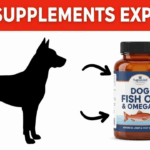Last Updated on June 10, 2021 by Dogs Vets
Are grapes bad for dogs? Everything You Need To Know
Our dogs love to eat fruit because it is tasty and also very hydrating; it contains vitamins, minerals, and toxins. Yes, you see the benefits right? they contain toxins that are generally harmless to humans, but not to dogs.
Grapes are well-known poisonous food for dogs; this means that if they eat them, they are also intoxicated and suffer pain and health problems, even death if the quantity is huge.
What happens if my dog eats grapes?
My dog ate one grape. Depending on the amount you eat, he will vomit as a general symptom of diarrhea and abdominal pain. But if he eats a lot, he will probably even die.
According to Merck’s Veterinary Manual, the lethal amount of grapes for a dog is 32 grams per kilogram of weight for fresh grapes and 10 grams per kilogram of weight for raisins.
If your cute dog eats grapes or raisins and his health is fragile, the problems are usually more serious.
As we have already said, this will affect the dog in one way or another depending on the dog’s build, genetics, state of health, etc.

In many studies that have been carried out, no one can say categorically that this is what will make a dog sick, studies have concluded that grapes of any kind will affect them negatively, seriously damaging their kidneys and causing kidney failure.
What exactly happens to dogs after eating grapes?
Well, after consuming grapes or raisins, the dog starts with digestive discomfort followed by acute kidney failure.
Within the first two hours, dogs vomit. After about 5 hours or more, the dog will start to experience diarrhea and lethargy. They become very thirsty. After 24 hours, renal failure is already present and could worsen in the following days.
Renal failure occurs because the dog has abdominal pain, no appetite, is depressed and lethargic, vomits and shakes. If the dog has been observed to urinate less frequently and already at the vet, this also indicates that the dog has hypovolaemia, a drop in blood plasma.

Here are the signs and symptoms that can occur after ingesting poison:
- Loss of appetite
- Symptoms of food poisoning may include: loss of appetite
- Vomiting and/or diarrhea most often happens within a few hours.
- Abdominal pain (tender to touch)
- Dehydration (symptoms include shortness of breath, dry nose, and mouth, pale gums). A quick way to test for
- dehydration is to gently pull the skin on the back of the dog’s neck. It should immediately spin back.
- Increased thirst and/or urine output or decreased amount or complete cessation of urination.
- Kidney failure (which can be fatal)
If your dog has been eating grapes or raisins, the treatment is absolutely critical. Contact your veterinarian who may advise you to vomit as soon as possible.
However, you shouldn’t induce vomiting if your dog is having trouble breathing, is anxious, is unconscious, or if you are unsure what he has eaten.
However, according to the ASPCA, grapes of all variants can cause serious harm to your dog. This includes grapes purchased from supermarkets and grapes eaten from a backyard garden vineyard.
Both red and green grapes are suspect, as are grapes with and without seeds. Since raisins are dry grapes, they should also be avoided. Even leftovers pressed from a vineyard can prove fatal. Each has been documented to lead to kidney failure in dogs.
Why are grapes, raisins, and grapefruits dangerous for dogs?
It is not known specifically how or why poisoning occurs, only that it does. Grapes that result in kidney failure have been tested for contamination with chemicals, toxins, and metals, all with negative results (McKnight 135). According to VCAHospitals.com:
Some researchers also suspect that mycotoxin (a toxic substance produced by a fungus or mold) may be the cause.
Some suspect that a salicylate (similar to aspirin) drug may be found naturally in the grape, resulting in reduced blood flow to the kidneys. ”
Another hypothesis is that since grapeseed oil is considered safe, the toxins are found in the grape skin. However, these are all simple assumptions, and until proven otherwise, peeled and unpeeled grapes should not be fed to dogs.
How much is too much grapes?
Unfortunately, not too many grapes or raisins need to be consumed to cause harm. One documented hypothesis attributes ingestion of just 0.32 to 0.65 ounces per kilogram of dog weight to toxicity (Mazzaferro et al.). This is the lowest confirmed dosage proven problematic.
For this reason, if it is suspected that a pet has eaten grapes, it should be closely monitored. However, to identify problems, it is important for owners to know what to look for.
Symptoms of grape toxicity in dogs
Symptoms may appear within hours or later days after ingesting grapes or raisins. An initial sign of poisoning is vomiting, which typically occurs within an hour or two.
Over the next three to four hours, dogs may also develop diarrhea, fatigue, and excessive thirst. Other warning signs include lack of appetite or energy, stomach pain, and shaking.
Take Note: To protect pets from harm, be sure to store grapes and raisins at levels above pets.
How are dogs treated after consuming toxic grapes?
Quick action is vital to improve a pet’s chances of survival. A professional veterinarian should induce vomiting and administer activated charcoal to the affected dog within an hour or two at most (McKnight 136).
Providing fluids for the dog to encourage urination in the first two days may prevent acute renal failure. The more time that passes before a dog properly empties its toxin from its system, the more severe the condition becomes.
Blood tests should be done for three days after ingesting grapes. Kidney enzymes should be monitored to detect signs of organ failure.
If kidney failure is confirmed, medication or dialysis may save a pet. Generally, when the kidneys maintain their essential functions and treatment is applied quickly, the chances of recovery are favorable.
However, if kidney problems develop to the extent that an animal can no longer process and eliminate toxins, the odds are against recovery.
How likely are they to recover from the poisoning?
In a study of forty-three dogs brought to the ASPCA for health complications caused by grapes and raisins, only a little more than half survived. Of the twenty-three survivors, only fifteen showed full recovery from symptoms.
How to prevent your dog or pet’s toxicity from grapes and raisins
To prevent harm to pets, be sure to store grapes and raisins at levels above the animals. If home gardens include vines, make them inaccessible.
If you are eating a portion of food not normally included in a dog’s diet, check the ASPCA website just to make sure it is safe. You could be saving your pet’s life.
People Frequently Asked questions
What happens if my dog eats a grape?
Grapes and raisins are known to be very toxic to dogs, although research has yet to identify which substance in the fruit causes this reaction. Sadly, grape/raisin toxicity can even be fatal for your dog. Ingestion of the fruit could potentially lead to acute (sudden) kidney failure in dogs.
How many grapes can kill a dog?
A typical grape weighs 2 – 5g, making a toxic dose to be about 4 grapes per kg. So if a 5kg terrier eats 20 grapes or a 30kg Labrador eats 120 grapes, there is a high likelihood of a serious problem, and veterinary intervention is definitely indicated. The lowest poison dose in confirmed cases has been about 3 g/kg.
Will a grape stop a small dog?
Eating just one grape could damage your dog’s kidneys, vets warn. Grapes can be toxic to some dogs and should be avoided. … Symptoms that some dogs show after eating grapes or raisins can include vomiting, diarrhea, lethargy, lack of appetite, and difficulty urinating, according to a 2002 Animal Watch report from the society.
Do all dogs get sick from grapes?
All products that are made from grapes are considered toxic to dogs and some other pets. One grape can be deadly to some dogs and other dogs can eat a bunch of dozen without ill effects. The size of the dog, breed, age, or health of the dog are not factors in which dogs are affected or the severity of symptoms.
What should I do if my dog ate two grapes?
Seek veterinary care immediately. You can prevent many of the negative effects of eating grapes or raisins if your dog is treated quickly enough. Once you get to a veterinarian, the treatment plan for your dog is very simple. It problem mostly begins with induced vomiting to remove the fruit from your dog’s system.
Which fruits are bad for dogs?
12 types of fruits and vegetables that are toxic to dogs
Grapes and raisins. First on our list should be raisins and grapes.
- Avocado
- Mushrooms
- Nutmeg
- Onions and garlic
- DRIED HOPS
- Unripe tomatoes
- Seeds and stones
Fact Check
We strive to provide the latest valuable information for pet lovers with accuracy and fairness. If you would like to add to this post or advertise with us, don’t hesitate to reach us. If you see something that doesn’t look right, contact us!
Reference:

















